Note: Several readers have requested posts on topics that have already appeared here – this is one of those 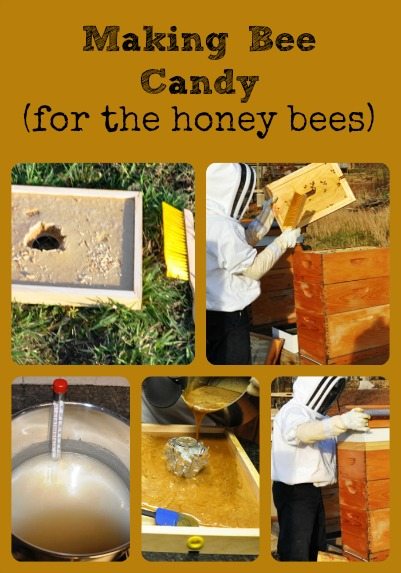
To help the honey bees survive winter, we add bee candy to their hives in the fall. The candy is made of sugar, water, and high protein pollen substitute; and it’s placed at the top of the hive in winter – ready for the bees should they exhaust their honey reserves.
We mix 1 1/2 lbs. of water with 8 lbs. of sugar; and then heat to a slow boil while stirring. At about 220 – 230°F, candy consistency should be achieved.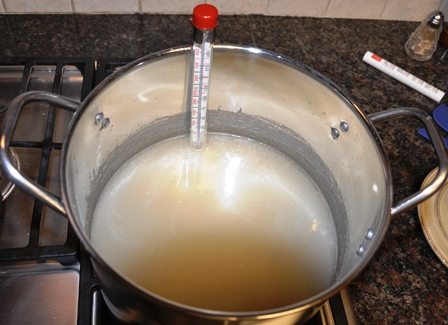
After reaching candy consistency, the mixture gets taken off the heat and 1 lb. of high protein pollen substitute is added.
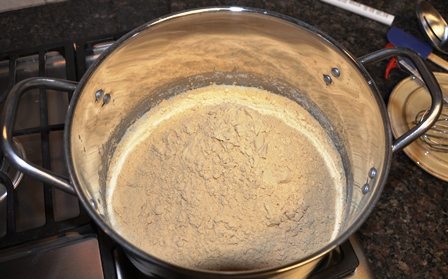
We chose to put the candy in the deep side of a two-sided inner cover. In the summer, the shallow side of the cover faces down and it functions as a typical inner cover. There is a hole in the center that can be used to feed the bees sugar-water from a mason jar. During the winter, the deep side can be used as a mold to hold bee candy. The picture below shows the deep side of the inner cover ready for the candy (the mason jar is covering the center hole and prevents the candy from flowing out when it’s hot).
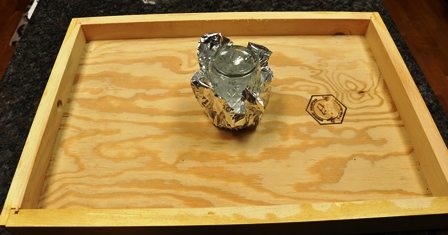
Once the candy is poured into the inner cover, it takes only minutes to begin setting up.
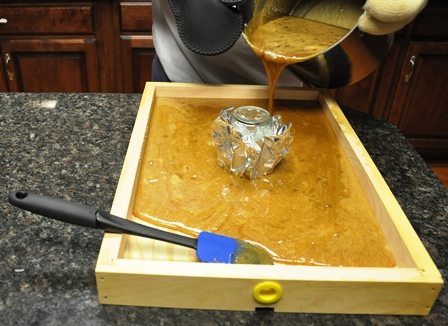
Two finished inner covers with bee candy hardened are shown below – we make candy for all the hives.
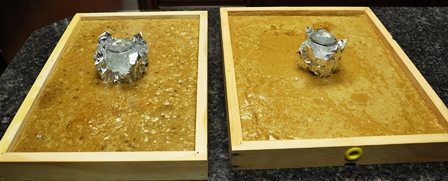
Time to put the covers on the hives.
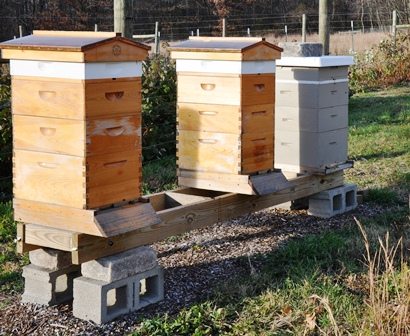
Inner cover with bee candy ready to go in the hive.
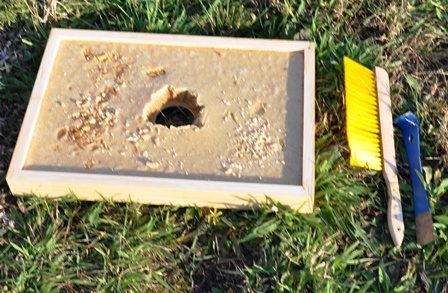
Removing the old inner cover, and brushing the bees back into the hive.
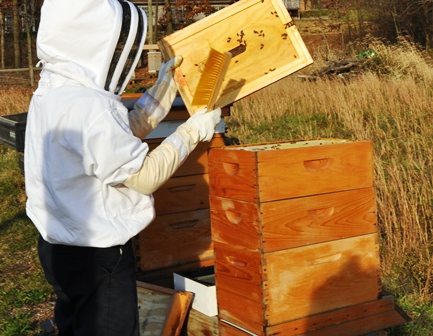
Placing the inner cover on the hive – the candy faces down and hive moisture softens the candy so it’s easy for the bees to eat. This puts the candy at the top of the hive, right where the bees will need it if they run out of their own honey.
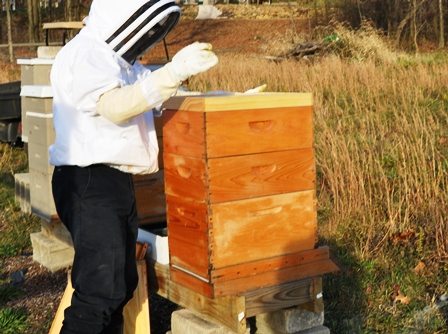
That’s it, the bees have an extra source of food this winter – should they need it.
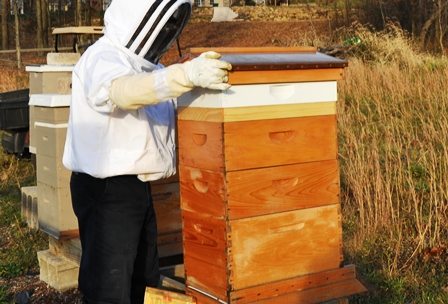
Scott peloquin says
Will this draw bees to a new hive
Lesa says
Hi Scott,
The intention here is not to draw bees to a new hive but to feed the bees in a current hive. I suppose if you put bee candy on a new hive, bees from an established hive “might” find it and start eating it. But they would return to their own hive.
Karissa says
Lesa, my hubby and I are planning on getting bees this next year (so very excited) and I really appreciate all the wonderful information that you have! I was wondering, if your bees don’t use the bee candy during the winter, then come spring time what do you do with the covers that are coated in the candy? Do you have to clean them or do you just leave them?
Lesa says
Hi Karissa, glad to hear you’re getting bees! If there is any bee candy left, I’d take it out and if there’s a reasonable amount left, put it in the freezer and save it for using next winter. If there’s just a little, I’d clean them. Don’t think we had much problem with that, the bees pretty much ate it all.
Ashley says
Could you use flour instead of pollen protein?
Lesa says
Hi Ashley, I wouldn’t recommend substituting flour, I don’t think it would provide the right food for the bees.
Kellie says
where do you get pollen protein? Any recommendations?
Lesa says
Kellie, you can buy pollen substitute (I think one brand is Megabee, or just google pollen substitute), or you can collect pollen from your hives during the summer using pollen traps and feed it back to them in the winter.